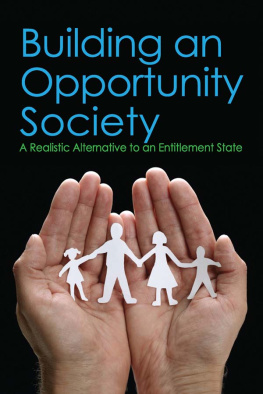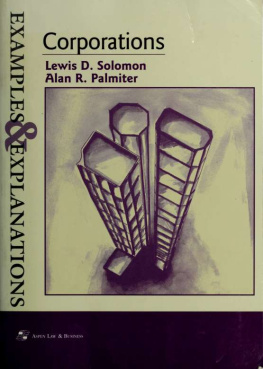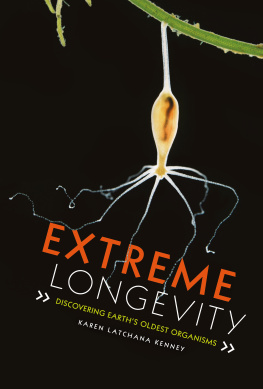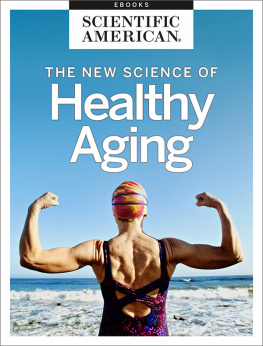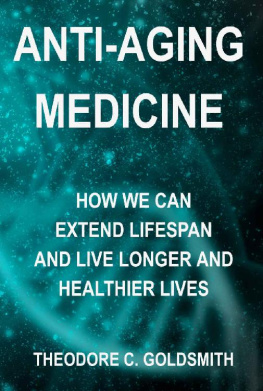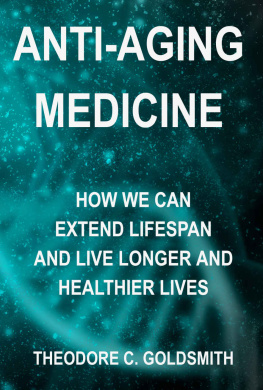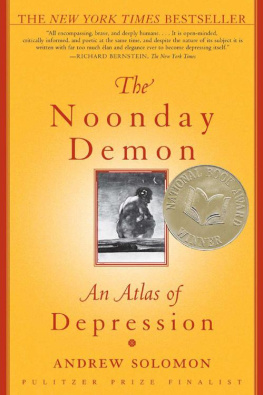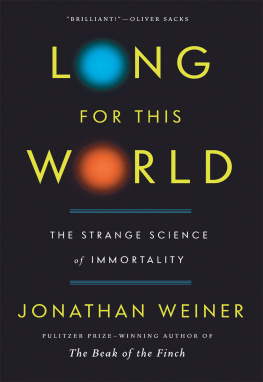First published 2006 by Transaction Publishers
Published 2017 by Routledge
2 Park Square, Milton Park, Abingdon, Oxon OX14 4RN
711 Third Avenue, New York, NY 10017, USA
Routledge is an imprint of the Taylor & Francis Group, an informa business
Copyright 2006 by Taylor & Francis.
All rights reserved. No part of this book may be reprinted or reproduced or utilised in any form or by any electronic, mechanical, or other means, now known or hereafter invented, including photocopying and recording, or in any information storage or retrieval system, without permission in writing from the publishers.
Notice:
Product or corporate names may be trademarks or registered trademarks, and are used only for identification and explanation without intent to infringe.
Library of Congress Catalog Number: 2005053804
Library of Congress Cataloging-in-Publication Data
Solomon, Lewis D.
The quest for human longevity : science, business, and public policy / Lewis D. Solomon.
p. cm.
Includes bibliographical references and index.
ISBN 0-7658-0300-3
1. Longevity. 2. Demography. I. Title.
QP85.S52 2005
613.0434dc22
2005053804
ISBN 13: 978-0-7658-0300-9 (hbk)
In memory of my father, Milton A. Solomon, and his interest in medicine
The twenty-first century opens the possibility of a dramatic extension of human lifespan. It is an all too alluring quest. Yet, a yearning as old as civilization to extend the human lifespan may be within reach.
The quest for longevity, marked by a life free of disease and disability, has long been a dream of humans. The idea of living longer, of finding the fountain of youth, has attracted adventur-ers for centuries. Ponce de Leon, the Spanish explorer, is probably the best known. While serving as the governor of what is now Puerto Rico, legend has it that he heard tales from the local population about an island with a spring that restored youth to anyone who drank from it. Ponce de Leon mounted an expedition to find the island in 1513, nearly five hundred years ago. Although the island proved elusive, he discovered what is now Florida.
We may be at the cusp of the second longevity revolution. The first longevity revolution mainly occurred during the first half of the twentieth century. We made progress despite the toll from cigarette smoking that flourished during this period. Sanitation improved tremendously. Vaccines were developed. Infant and maternal mortality declined; infectious diseases were conquered and nutrition improved. During the second half of the last century, a significant reduction in deaths occurred related to the more successful treat-ment and prevention of heart disease and cancer.
Over the past one hundred years, medicine altered the life expectancy curve. An American woman born in 1900 could expect to live to roughly age fifty, a man slightly less. In the United States, a female born in 2004 can expect to live to slightly more than eighty, a man to about seventy-four.1 Many more people enjoy the opportunity to become old and face age-related, life-threatening pathologies.
While medicine has made many advances, the elderly still encounter numerous problems that characterize the wasting away of the human body and brain. Physical and mental abilities of seniors decline and decay.2 As we age, we lose our resiliency, the ability to bounce back when our bodys equilibrium is disrupted by viruses, bacteria, infection, or accidents. We become more susceptible to a variety of age-related illnesses, including heart disease, hypertension, Parkinsons disease, Alzheimers disease, stroke, and cancer.
Aging is characterized by the deterioration of every tissue, organ, and system in the body. It occurs in a progressive manner, beginning, for most of us, in our late thirties and early forties. The consequences of aging are so pervasive and intertwined with degenerative diseases that it is difficult to measure the rate of aging. Many of the features of aging are characteristic of deadly diseases and conditions. Thus, often it is difficult to separate aging from the disease processes.
To facilitate the second longevity revolution, some scientists want to retard or stop our physical deterioration. They seek to intervene in the general process of aging, thereby increasing not only the average human life (ones life expectancy) but also the maximum number of years humans can live (ones lifespan). Importantly, researchers also seek to significantly increase the quality of life during the additional decades of existence, permitting individuals to remain active for virtually their entire lives, with death coming quickly, for instance, from a heart that cannot keep pumping, so that a compression of morbidity will accompany life extension. In addition to slowing aging and keeping the body free from disease, scientists also want to preserve mental sharpness as we grow old. They search for a magic pill or therapy to extend life and tackle many problems simultaneously. In so doing, these researchers assume that there is a general, body-wide process of aging.
For centuries, aging was understood as the scattered, rather chaotic, but the inevitable breakdown of the human body, its tissues and organs. Similar to a car with too many miles, the consensus was that the body eventually wears out. Even if you fix one part, others will give out. The human machine was thought to inexorably break-down.
Until recently, the process of aging was not thought to be amenable to intervention. As a result of the bodys interaction with the environment and a poor understanding of the workings of human genes, aging was considered too complex to solve. Although our biological clocks tick at different rates, it was seen as inevitably occurring. Thus, we were admonished to accept our finitude and make old age more manageable.
An intense, methodical quest is now under way to turn off aging and extend life using proven science. A hunt is underway to discover the repair mechanisms that work so well during youth. If we understand these natural repair systems, we should be able to reset them or use them to repair the body as it advances in years. According to Bruce N. Ames, a noted scientist, whose work is discussed in
Over the past decade, respected scientists achieved impressive results in their laboratories, which were then scrupulously checked and peer-reviewed. These legitimate researchers at top-flight academic institutions see aging as subject to slowing. Some even see the possibility of reversing any age-related decline that has already occurred and restoring vitality and function, thereby combating the aging process to achieve a perpetually youthful physiological state.4 In their search, these prolongevity scientists start with aging, targeting the mechanisms and pathways of aging, not any specific disease itself.


